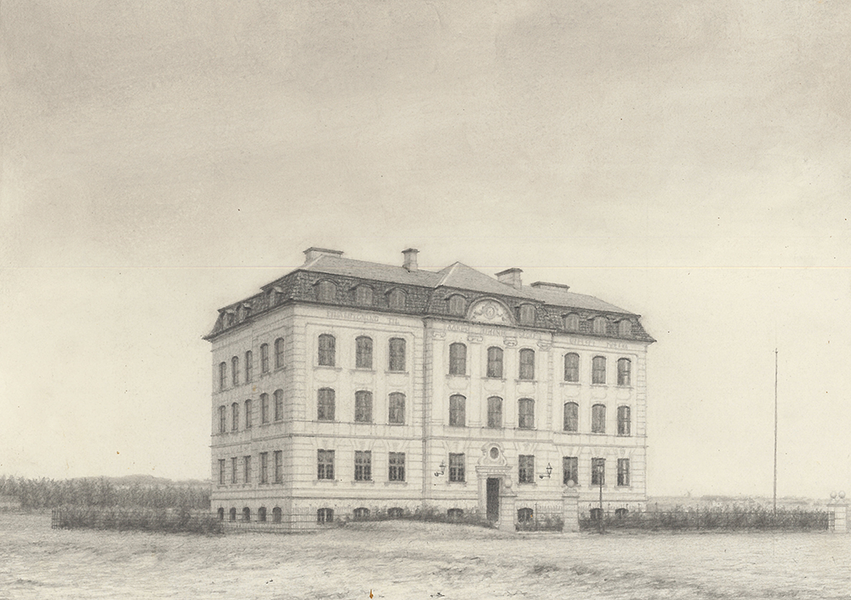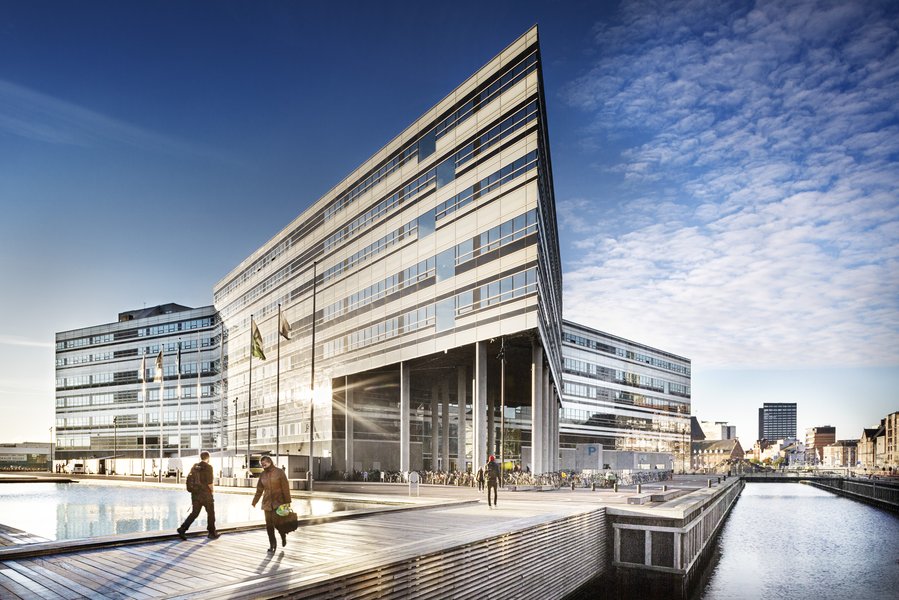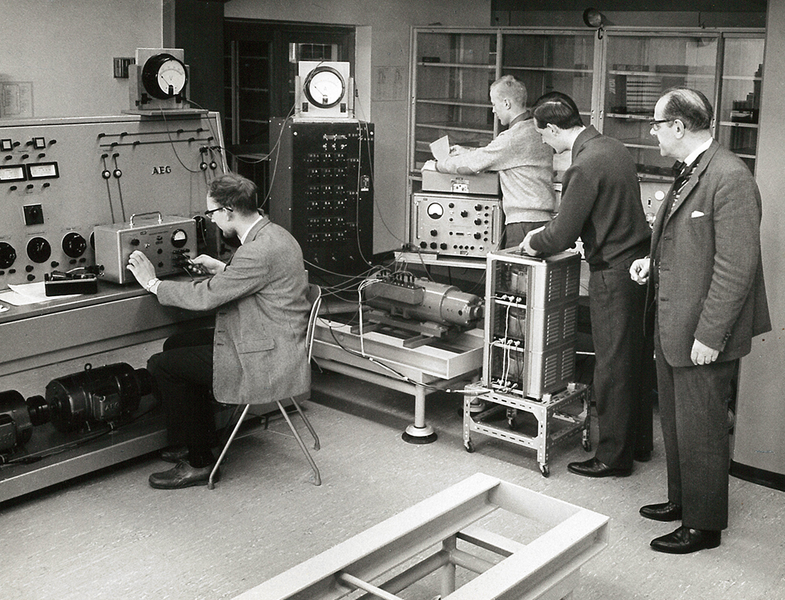Engineering in Aarhus celebrates its centenary
In November 2015, it is 100 years since the first engineering degree programme was established in Aarhus. Three generations of graduates have been a significant driving force in the industrialisation of the city and the region, and in developing the technology-based society we know today.




Aarhus University is celebrating the centenary of the engineering degree programmes in Aarhus, and engineering in the years ahead.
This will take place via different activities in which companies, school pupils and the general public will be invited to the university to experience the wonderful world of the art of engineering.
Later in the month, the university will hold a formal reception and a centennial symposium focusing on the growing technologies of the future.
“We’re using the centenary as an historical event to look ahead to the new technologies that will change the world in the coming years,” says Dean Niels Chr. Nielsen, Science and Technology, Aarhus University.
Aarhus engineers behind growth throughout Jutland
Engineers from Aarhus are responsible for a number of companies, a considerable amount of export and new workplaces.
Graduates include Peter Bang and Svend Olufsen, who received their diplomas in 1924 and established Bang & Olufsen in 1925.
Another graduate is Niels Due Jensen, who completed his mechanical engineering studies in 1979. He subsequently took over the position of CEO of Grundfos Holding A/S and is currently Chairman of the Board of the Poul Due Jensen Foundation.
“Studying at the Aarhus Technical School has filled my working life with professional enthusiasm and excitement about being able to help develop products that have contributed to making the world more prosperous and to making life easier for millions of people,” he says.
There are also words of praise from the business sector regarding the practical engineering degree programmes at Aarhus University.
“Engineers from Aarhus University are used to working with case-based projects to solve problems. This means that as they become more theoretically specialised, they remain in touch with reality. This is a qualification that we attach great importance to when we appoint talented new workers,” says Research Manager Per Hessellund Lauritsen, Siemens Wind Power A/S.
Degrees with strong DNA
In 1915, Aarhus was authorised for the first time to set up an electro-technical degree with five promising technical school students. The industrial development in the early twentieth century led to a growing economy based on finer electronics, and the business sector’s demand for manpower was the direct reason for establishing the new school.
Aarhus University currently has approximately 3000 enrolled engineering students, and industrial demand for their skills is greater than ever before.
In recent years, a number of multinational companies have established facilities in Aarhus because they want to be close to the engineering research and development environment.
Dean Niels Chr. Nielsen emphasises that this is particularly due to the fact that the university has maintained a study model for the engineering degree programmes with a focus on practical work.
“Our ambition is to educate engineers who are competitive in a globalised job market. We do this by focusing consistently on a balance between theoretical specialisation and practical engineering work. We want to match the innovation requirements of companies in Denmark and abroad, at the same time as future-proofing our engineering degree programmes with an increased research base. History tells us that we – as an engineering education institution – have a very great impact on societal development, and we take this seriously. We are jointly responsible for ensuring that the future generations of engineers can turn technology into solutions that create value in society, and quality of life for the individual,” says Dean Niels Chr. Nielsen.
Read more (in Danish only) below.
VIGTIGE ÅRSTAL
- I 1915 blev den første ingeniøruddannelse oprettet i Aarhus som elektroteknikum med navnet Århus Teknikum. Det var den industrielle udvikling i starten af århundredet med en voksende økonomi baseret på finere elektronik, der var direkte årsag til etableringen af den nye skole.
- I 1944 blev Århus Teknikum udvidet med et bygningsteknikum. Det var en massiv bolignød efter 2. Verdenskrig, der udmøntede sig i et akut behov for ingeniører. Disse ingeniører udviklede nye byggeteknikker og materialer, som gradvist kom til at ændre byggeriets vilkår i Danmark.
- I 1964 blev et nyt maskinteknikum etableret. På det tidspunkt befandt Danmark sig i en bølge af højkonjunktur med øget international handel og mangel på arbejdskraft. Den nye uddannelse skulle matche industriens behov for mekaniske løsninger til en mere effektiv masseproduktion.
- Det var også i 1964, at studerende på elektroteknikum blev opdelt i svagstrøms- og stærkstrømsklasser. De nye svagstrømsstuderende havde et særligt fokus på de allerførste former for informations- og kommunikationsteknologier, som i 60’erne blev udviklet af dataforskere med tilknytning til det amerikanske forsvarsministerium.
- Senere – i digitaliseringens barndom - blev svagstrømsuddannelsen yderligere differentieret og opdelt i to selvstændige uddannelser med fokus på henholdsvis elektronik og computerteknologi.
- Senere – i digitaliseringens barndom - blev svagstrømsuddannelsen yderligere differentieret. Stærkstrømsingeniørerne fra Aarhus havde en afgørende indflydelse på udviklingen af det danske højspændingsnet, som var blandt verdens mest avancerede.
- I 2015 skiftede stærkstrømsingeniøruddannelsen navn til Elektrisk energiteknologi, som et symbol på et energihistorisk paradigmeskifte kendetegnet ved fokus på bæredygtighed og på integration af sol og vind i det intelligente el-net.
- I nullerne voksede udbuddet af ingeniøruddannelserne markant. I 2004 kunne Ingeniørhøjskolen udbyde en ny uddannelse i bioprocesteknologi (bioteknologi), som blandt andet skulle være med til at forsyne den voksende medicinal- og øvrige kemiske procesindustri med kvalificeret arbejdskraft.
- I 2008 etablerede Ingeniørhøjskolen en ny uddannelse i sundhedsteknologi og senere en civilingeniøruddannelse i biomedicinsk teknologi. De første dimittender blev udklækket i januar 2012 og er i dag nøgleaktører i en gennemgribende teknologibaseret omstilling af sundhedssektoren.
- I 2015 startede det første hold af kemiingeniører på Aarhus Universitet. De skal være med til at dække virksomhedernes behov for viden om miljø, råvarer, nye materialer, brændstoffer og medicin i en brancheudvikling domineret af eksponentielle vækstteknologier.
FAKTA
Aarhus Teknikum blev omdøbt til Ingeniørhøjskolen i Århus i forbindelse med en reform af ingeniøruddannelser i 1993.
Den 1. januar 2012 indgik Ingeniørhøjskolen og Aarhus Universitet en fusion. Grundtanken bag fusionen var at skabe optimale betingelser for at modernisere ingeniøruddannelserne med øget forskningsbasering i overensstemmelse med erhvervslivets behov.
AU Engineering består af Ingeniørhøjskolen Aarhus Universitet, som samler diplomingeniøruddannelserne og Institut for Ingeniørvidenskab, som samler civilingeniøruddannelserne og den ingeniørvidenskabelige forskning.
AU Engineering har i dag cirka 3000 indskrevne ingeniørstuderende fordelt på fire campusområder. Det er et af de videnskabelige områder på universitetet, der står bag den mest markante vækst – både hvad angår antallet af studerende og mængden af forskningsaktiviteter.
